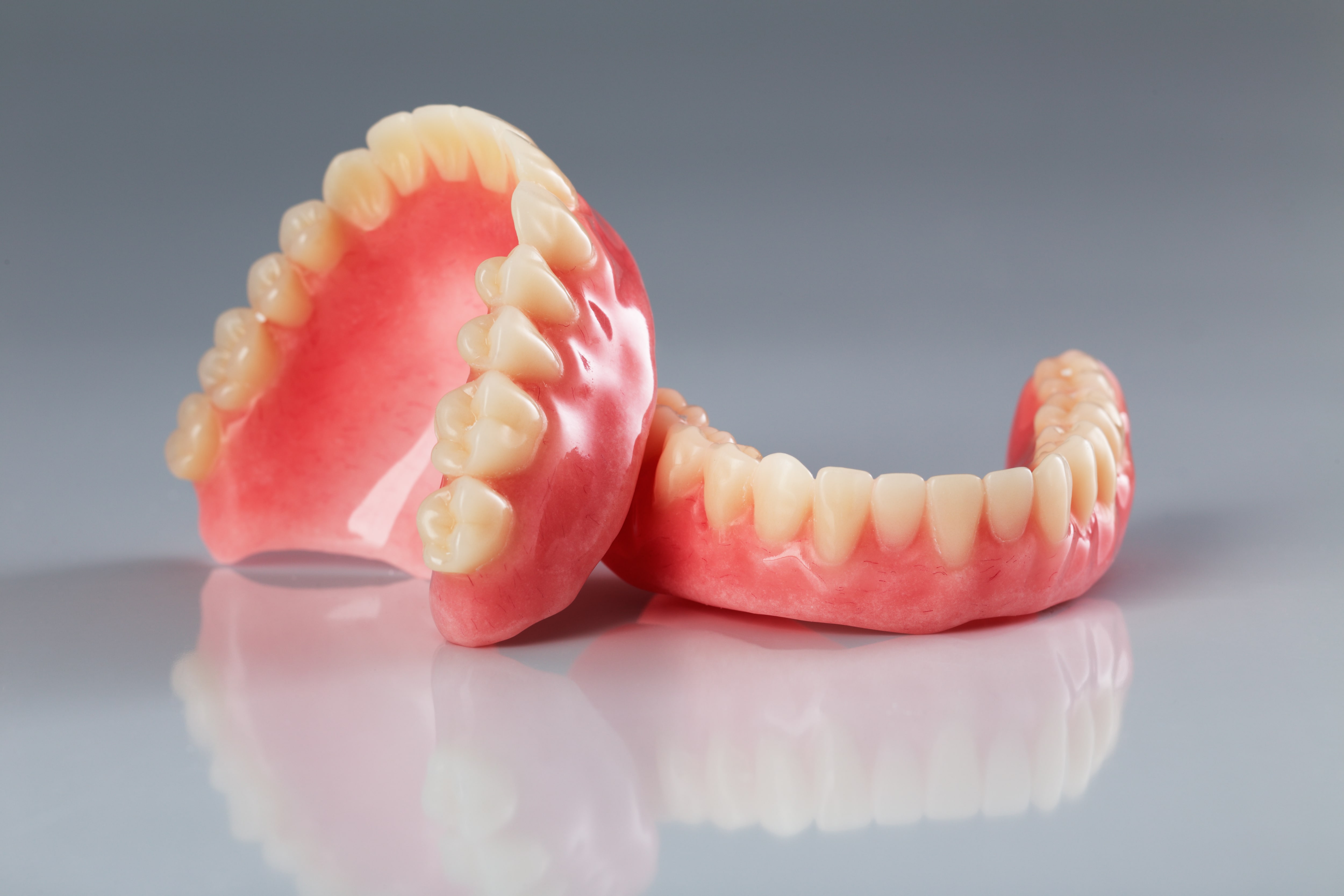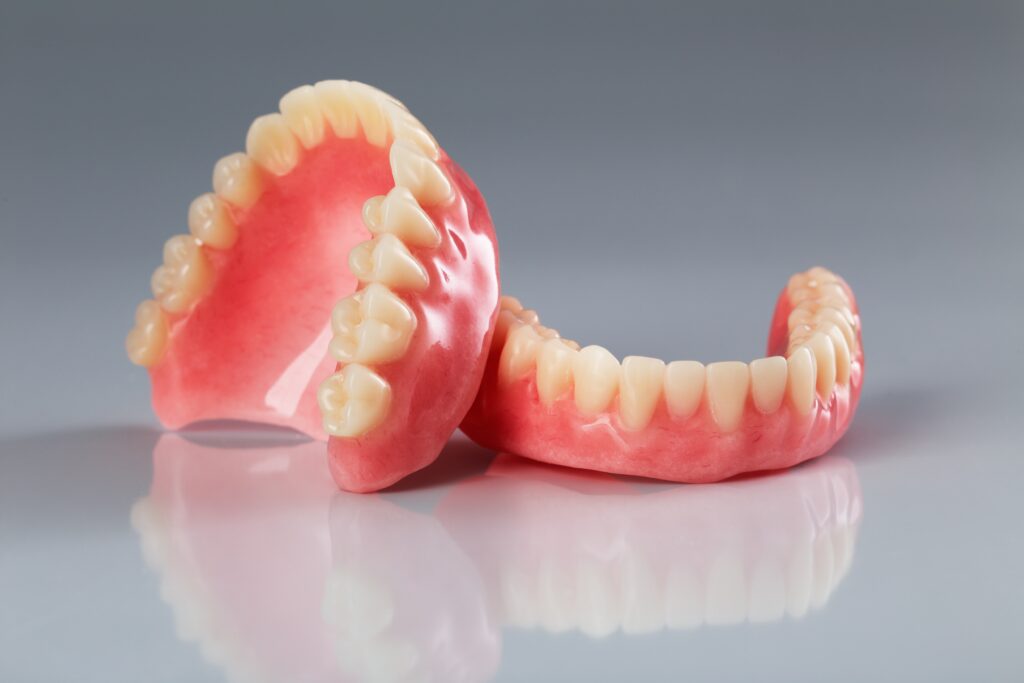
Denture
Denture
A denture is a removable replacement for missing teeth and surrounding tissues. Two types of dentures are available — complete and partial dentures. Complete dentures are used when all the teeth are missing, while partial dentures are used when some natural teeth remain.
A frenectomy is an oral procedure during which a frenum in the mouth is altered or removed with a laser. A frenum is an attachment between two soft tissues in the mouth, including the cheeks, lips, and gums. The two types of frenum are known as the labial frenum and the lingual frenum.

Complete Dentures: Complete dentures are made of a plastic base that is colored in order to replicate gum tissue and supports a full set of plastic or porcelain teeth. The traditional full denture is held in the mouth by forming a seal with the gums. Complete dentures can be either “conventional” or “immediate.” Made after the teeth have been removed and the gum tissue has begun to heal, a conventional denture is ready for placement in the mouth about eight to 12 weeks after the teeth have been removed.
Unlike conventional dentures, immediate dentures are made in advance and can be positioned as soon as the teeth are removed. As a result, the wearer does not have to be without teeth during the healing period. However, bones and gums shrink over time, especially during the healing period following tooth removal.
Therefore a disadvantage of immediate dentures compared with conventional dentures is that they require more adjustments to fit properly during the healing process and generally should only be considered a temporary solution until conventional dentures can be made.
Partial Dentures: Partial dentures can either be made with a plastic base or a metal framework that supports the number of teeth that need to be replaced. It is held in the mouth by using clasps and rests that are carefully adapted around the natural teeth. The partial denture that uses a metal framework is the traditional design, due to the rigidity and strength of the metal. Plastic partial dentures have normally been used as emergency or temporary replacements of missing teeth, allowing the gums and bone to heal before a definitive restorative solution is obtained. Recently, however, various materials such as Valplast have been developed to provide durable, flexible alternatives in certain situations.
A removable partial denture or bridge usually consists of replacement teeth attached to a pink or gum-colored plastic base, which is sometimes connected by metal framework that holds the denture in place in the mouth. Partial dentures are used when one or more natural teeth remain in the upper or lower jaw. A fixed bridge replaces one or more teeth by placing crowns on the teeth on either side of the space and attaching artificial teeth to them. This “bridge” is then cemented into place. Not only does a partial denture fill in the spaces created by missing teeth, it prevents other teeth from changing position. A precision partial denture is removable and has internal attachments rather than clasps that attach to the adjacent crowns. This is a more natural-looking appliance.
0+
Patients
0+
Years Experience
0%
Satisfaction
0+
Successful Root Canal Treatment
Do’s while dentures on
Soak your dentures overnight in water or solution given by your dentist
- Rinse your dentures before putting them on in the morning
- Brush daily with soft bristles with tooth paste as prescribed by your dentist
- Do take care of your mouth, gums, and tongue
Don’ts while dentures on
- Do not try and bite hard food with front Dentures
- Do not be abrasive while brushing
- Do not use a toothpick or pointed objects on Dentures
- Do not drop them as they are delicate and may break if you do so
- If they loosen, do not try to fix it on your own instead visit a dentist
